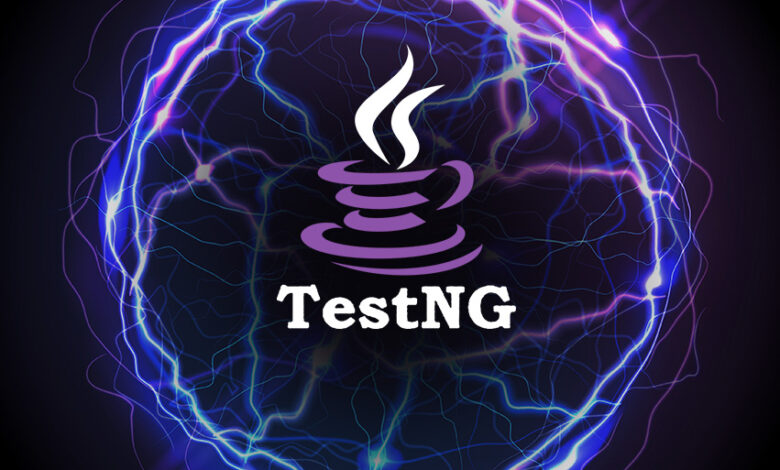TestNG Configuration and Test Suite Management for Selenium Automation Testing

There are a number of configuration management tools available for developing, testing and maintaining Java applications. TestNG is an open source project that helps to manage the configuration, execution and results of unit tests in a very modular and flexible way. In this post we will cover using TestNG to develop Java applications.
Configuring and maintaining TestNG is a prerequisite for any self-respecting test automation engineer. This article will walk you through the steps of setting up TestNG, exploring its configuration tools, and configuring your local setup.
TestNG Configuration and Test Suite Management for Selenium automation testing The TestNG framework is widely used to manage test suites of Java, JUnit and Apsu. It has been designed to allow a developer to configure their tests through a simple configuration language.In this blog post, we will explore TestNG configuration and test suite management techniques to help you optimise your Selenium automation testing process.
TestNG Configuration
TestNG offers various configuration options that enable you to customise and control the execution of your test suites. Here are some key configuration features to consider:
TestNG XML Configuration:
TestNG XML Configuration allows for automated test suite configuration and management . This provides a flexible structure for your tests that is based on simple XML syntax. The configuration file can be used to define sub-test suites and test classes. This gives you the flexibility to reorganise and rename your tests as needed with no impact on your target application code or behaviour. As an added benefit, you will have consistent naming conventions across all test suites so you’re able to easily identify related tests at a glance.
TestNG Annotations:
TestNG is a flexible yet powerful framework for writing automated functional tests in Java. TestNG is open source and supports many platform and programming languages, but one of its strengths is its extensibility through annotations.
Annotations are a feature of Java that allows you to customise your code to adjust it for specific situations, such as handling errors or asserting the behaviour you expect from your code. An annotation can have the same name as an existing Java method, class or interface, but be used differently with different configurations.
TestNG offers a wide range of annotations that are essential for understanding and utilising Selenium automation testing in an efficient and structured manner. These annotations are used to define test execution, preconditions, dependencies, and cleanup operations.
The “@Test” annotation indicates that a method is a test case, and TestNG takes into account methods annotated with this annotation for test execution. This annotation can be used to specify various attributes, including priority, groups, dataProvider, and data-driven testing.
Parallel Execution:
TestNG provides the ability to execute tests in parallel at various levels. This can be achieved by running tests in parallel for a particular method, class, or even an entire test suite in order to expedite the execution of tests and optimise resource usage.
TestNG provides a range of parallel execution modes to meet the needs of various testing scenarios. These modes include: a. parallel by methods, which allows for the execution of test methods in parallel, with each method running in its own dedicated thread for maximum concurrency and accelerated execution. b. parallel by classes, which allows TestNG to execute test classes simultaneously, with each class running in its own separate thread for simultaneous execution.
Dependency management:
TestNG supports annotations that allow you to specify dependencies between test methods. For example, the test method “method1” can be set to “method2” using the annotation “dependsOnMethods”. This guarantees that specific test methods run in a certain order, which helps to ensure accurate test sequencing and correct test coverage.
Data-Driven Testing
Data driven testing is supported by TestNG, which means you can run different test methods with different sets of data. With the help of the annotation ‘DataProvider’, you can supply test data to different test methods. This way, you can separate test data from test logic, making it easier to run different iterations and variations of tests.
Configuration Parameters:
TestNG lets you set up configuration parameters by using the < parameter> tag in your XML configuration file. You can access these parameters inside your test classes and methods, so you can customise how the test runs, the test data, the environment, or whatever else you need.
TestNG listeners
TestNG listeners extend the functionality of the TestNG framework by providing hooks into the TestNG execution lifecycle. These hooks enable the implementation of custom actions or the addition of additional functionality. The listeners can be configured in the XML configuration file or through annotations. Examples of functionality include generating custom reports, capturing screenshots of test failures, handling test logging, and integrating with external tools.
Reporting
TestNG provides a comprehensive HTML-based report of the test execution by default. This report provides insight into the results of the test, the number of failures, and the overall statistics of the test execution. The report includes information such as the status of the test method, the time of execution, and the stack traces for any failures. Additionally, TestNG can generate custom reports by setting up custom listeners or by integrating with external reporting frameworks.
TestNG’s configuration options empower you to customise and optimise your Selenium automation testing process, ensuring efficient test execution and enhanced test management capabilities. Leveraging TestNG’s configuration features allows you to create maintainable, scalable, and reliable test suites.
Test Suite Management
Effective management of test suites is crucial for maintaining a well-structured and maintainable Selenium automation testing project. TestNG offers several practices and features to facilitate efficient test suite management. Let’s explore some essential aspects of test suite management in TestNG:
Modular Test Suite Design
If you want to organise your test suite better, break it down into modular units. Each module is based on a functional area or application feature, and each module represents a particular set of test cases. This way, you can make sure your test suite is reusable, maintainable, and easy to execute for different test scenarios. Plus, it helps you manage your test suite better and increases the scalability of your test suit
Test grouping
TestNG supports grouping tests using the annotation “test(groups = “group_name”)”.
By grouping tests by category, such as “smoke tests”, “regression tests”, or “functional areas”, tests can be executed in a more selective manner and in a more organised manner.
You can use the testng XML configuration file to specify the groups of tests you want to run, or you can use the command line interface to run them.
Prioritising tests
You can use the TestNG annotation to prioritise your test methods. For example, you can use the annotation “testng:priority = n” to set the priorities for your test methods.
Prioritising tests means that critical tests will be executed first. This way, you will be able to spot problems earlier in the testing cycle.
Prioritisation helps you control the order of test execution. This is especially useful when tests have dependent tests or tests that belong to different test groups.
Data-driven testing
Data-driven testing is a feature of TestNG that allows for the parameterization of test cases through the use of data providers. This is achieved by separating the test data from the test logic, allowing for the definition of test cases that run with varying input values. This approach to testing allows for a wider range of test coverage, the ability to handle a variety of scenarios, and the ability to maintain a consistent test method across multiple data sets.
Reporting and Logging
By default, TestNG creates comprehensive HTML reports that show test results, errors, and execution stats. These reports can help you figure out when a test failed, how much of the test was actually tested, and keep an eye on the overall health of your test suite. You can also use logging frameworks like Log4j and Logback to grab test execution logs, which can help with debugging and analysis.
Continuous Integration (CI) Integration
TestNG test suites can be integrated with well-known continuous integration tools, such as Jenkins, Bamboo or Azure DevOps, to facilitate the execution of tests as part of a CI/CD pipeline. CI integration streamlines the testing process, allows for the tracking of test results, and facilitates collaboration between team members.
TestNG Listeners
TestNG listeners facilitate the execution of tests by providing hooks into the execution lifecycle, enabling the implementation of custom actions or the addition of additional functionality. These listeners can be utilised to generate custom reports, capture screenshots of test failures, collect test metrics, or integrate with external systems, thereby enhancing the management and analytics of test suite execution.
By using TestNG to manage your test suites, you can make sure your Selenium automation testing is easy to maintain, grow, and perform well. Modularity, group testing, setting priorities, testing with data, setting configuration parameters, reporting and CI integration are some of the best practices that make test suite management easier and help increase testing efficiency.
Conclusion
If you want to make sure your Selenium automation tests are running smoothly, you need to make sure you configure and manage your test suites correctly. TestNG has lots of features to help you make sure your tests run smoothly, manage your dependencies, and make sure your web apps are up to date. With TestNG, you can use its configuration features to make sure your test suites are up to date and running smoothly.
With the right setup and management of your test suites, you can make sure your web applications are running smoothly and reliably.
With LambdaTest, you can run Selenium automation tests across multiple browsers at the same time. It’s a unified digital experience testing platform that’s available in the cloud. LambdaTest allows you to perform Selenium testing across a variety of browsers, OS, and devices at the same time in a scalable infrastructure.
By leveraging LambdaTest in Selenium automation testing, you can perform cross-browser testing efficiently, scale your test execution, and access a wide range of browsers and operating systems. LambdaTest simplifies the test infrastructure setup, provides detailed test logs and reports, and enhances collaboration, making it a valuable tool for Selenium automation testing in diverse browser environments.



